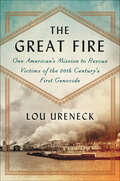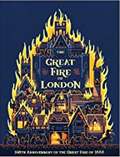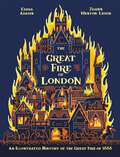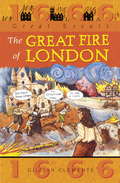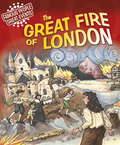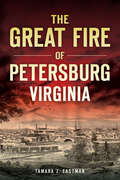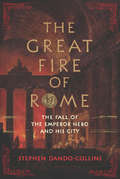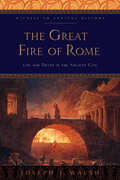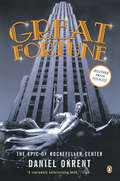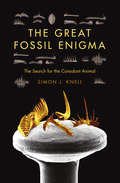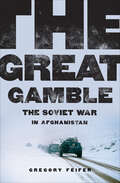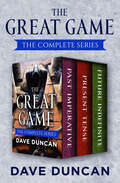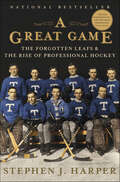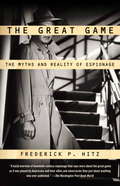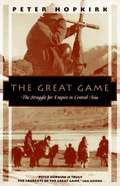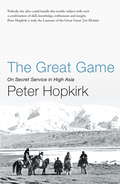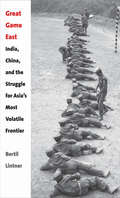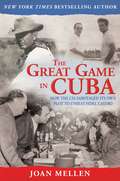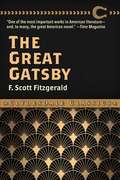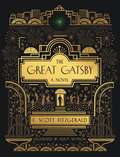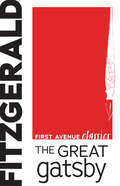- Table View
- List View
The Great Fire: One American's Mission to Rescue Victims of the 20th Century's First Genocide
by Lou UreneckThe harrowing story of a Methodist Minister and a principled American naval officer who helped rescue more than 250,000 refugees during the genocide of Armenian and Greek Christians—a tale of bravery, morality, and politics, published to coincide with the genocide’s centennial.The year was 1922: World War I had just come to a close, the Ottoman Empire was in decline, and Asa Jennings, a YMCA worker from upstate New York, had just arrived in the quiet coastal city of Smyrna to teach sports to boys. Several hundred miles to the east in Turkey’s interior, tensions between Greeks and Turks had boiled over into deadly violence. Mustapha Kemal, now known as Ataturk, and his Muslim army soon advanced into Smyrna, a Christian city, where a half a million terrified Greek and Armenian refugees had fled in a desperate attempt to escape his troops. Turkish soldiers proceeded to burn the city and rape and kill countless Christian refugees. Unwilling to leave with the other American civilians and determined to get Armenians and Greeks out of the doomed city, Jennings worked tirelessly to feed and transport the thousands of people gathered at the city’s Quay.With the help of the brilliant naval officer and Kentucky gentleman Halsey Powell, and a handful of others, Jennings commandeered a fleet of unoccupied Greek ships and was able to evacuate a quarter million innocent people—an amazing humanitarian act that has been lost to history, until now. Before the horrible events in Turkey were complete, Jennings had helped rescue a million people.By turns harrowing and inspiring, The Great Fire uses eyewitness accounts, documents, and survivor narratives to bring this episode—extraordinary for its brutality as well as its heroism—to life.
The Great Fire of London
by Emma AdamsIn 1666, London's citizens woke to see the skyline above their city's cramped wooden houses ablaze. The Great Fire of London is a hauntingly beautiful visual re-telling of one of the most well-known disasters in the city's history. To commemorate the 350th anniversary of the fire, powerful and sumptuous drawings from the new east London illustrator, James Weston Lewis, bring the events of November 1666 to life in this stunning gift book. Lewis's drawings take readers on a journey, from the single smouldering coal that falls out of the baker's oven to the swirling clouds of ash that engulf the city and then in to the very heart of the fire itself. As the pages turn, you can witness London burning to the ground and then rebuilding again. Children will love examining the rich detail of each spread, from the detailed city map to the drawings of London before, during and after the fire took hold. This book takes the dramatic historical information surrounding the Great Fire of London and transforms it into a breathtaking story that will transfix readers of all ages.
The Great Fire of London: Anniversary Edition of the Great Fire of 1666
by Emma AdamsIn 1666, London's citizens woke to see the skyline above their city's cramped wooden houses ablaze. The Great Fire of London is a hauntingly beautiful visual re-telling of one of the most well-known disasters in the city's history. To commemorate the 350th anniversary of the fire, powerful and sumptuous drawings from the new east London illustrator, James Weston Lewis, bring the events of November 1666 to life in this stunning gift book.Lewis's drawings take readers on a journey, from the single smouldering coal that falls out of the baker's oven to the swirling clouds of ash that engulf the city and then in to the very heart of the fire itself. As the pages turn, you can witness London burning to the ground and then rebuilding again. Children will love examining the rich detail of each spread, from the detailed city map to the drawings of London before, during and after the fire took hold. This book takes the dramatic historical information surrounding the Great Fire of London and transforms it into a breathtaking story that will transfix readers of all ages.
Great Fire Of London (Great Events #2)
by Gillian ClementsThe great events of British history are part of our shared heritage and it is important that children know the facts behind the famous dates from a young age. In this series, Gillian Clements tells the stories of some of these events through a lively combination of text and illustration (including some speech bubbles, labelled maps etc). In this way she makes history child-friendly and accessible but still manages to incorporate, wherever possible, primary source material (such as eyewitness accounts and documentary evidence). THE GREAT FIRE OF LONDON retells the events leading up to the fire of 1666 and its consequences.
The Great Fire of London (Famous People, Great Events #7)
by Gillian ClementsThe great events of British history are part of our shared heritage and it is important that children know the facts behind the famous dates from a young age. In this series, Gillian Clements tells the stories of some of these events through a lively combination of text and illustration (including some speech bubbles, labelled maps etc). In this way she makes history child-friendly and accessible but still manages to incorporate, wherever possible, primary source material (such as eyewitness accounts and documentary evidence). THE GREAT FIRE OF LONDON retells the events leading up to the fire of 1666 and its consequences.
Great Fire Of London: Great Events
by Gillian ClementsThe great events of British history are part of our shared heritage and it is important that children know the facts behind the famous dates from a young age. In this series, Gillian Clements tells the stories of some of these events through a lively combination of text and illustration (including some speech bubbles, labelled maps etc). In this way she makes history child-friendly and accessible but still manages to incorporate, wherever possible, primary source material (such as eyewitness accounts and documentary evidence). THE GREAT FIRE OF LONDON retells the events leading up to the fire of 1666 and its consequences.
The Great Fire of London: Famous People, Great Events
by Gillian ClementsThe great events of British history are part of our shared heritage and it is important that children know the facts behind the famous dates from a young age. In this series, Gillian Clements tells the stories of some of these events through a lively combination of text and illustration (including some speech bubbles, labelled maps etc). In this way she makes history child-friendly and accessible but still manages to incorporate, wherever possible, primary source material (such as eyewitness accounts and documentary evidence). THE GREAT FIRE OF LONDON retells the events leading up to the fire of 1666 and its consequences.
The Great Fire of Petersburg, Virginia (Disaster)
by Tamara J. EastmanOn July 16, 1815, a fire began in a small stable in Petersburg. After only a few hours, almost two-thirds of the city lay in ruins. Citizens stood on the banks of the Appomattox River and watched as wind blew flames from one building to the next. The tragedy claimed a dozen lives and destroyed more than five hundred homes. The fire raged until it was quelled by a downpour of rain. Stories of heroism from firefighters and landowners were left in the aftermath. Author Tamara Eastman describes the city before the fire, the horrific event and the collective efforts to rebuild a stronger city.
The Great Fire of Rome: The Fall of the Emperor Nero and His City
by Stephen Dando-CollinsThe story of Nero fiddling while Rome burned is as familiar to most people as George Washington and the cherry tree. Historian and writer Dando-Collins argues that Nero's reputation is as apocryphal as George's. In this micro-history, Dando-Collins begins with the famous fire and looks at the career of Nero and the city of Rome for the next four years, from 64-68. The tale of the decline and fall of Nero is based on contemporary authors. Dando-Collins is aware of the bias of men like Tacitus, Suetonius, Seneca, Josephus and the authors of the New Testament. He also suspects that the story of Nero blaming the fire on the Christians is a later interpolation. His account is for general readers rather than scholars and Dando-Collins makes some assumptions of his own that he doesn't substantiate. Nevertheless, this is an excellent corrective to myth and a good introduction to first-century Roman history. Annotation ©2011 Book News, Inc. , Portland, OR (booknews. com)
The Great Fire of Rome: Life and Death in the Ancient City (Witness to Ancient History)
by Joseph J. WalshA thrilling and momentous account of the Great Fire of Rome and how a modern city arose from its embers.Peril was everywhere in ancient Rome, but the Great Fire of 64 CE was unlike anything the city had ever experienced. No building, no neighborhood, no person was safe from conflagration. When the fire finally subsided—after burning for nine days straight—vast swaths of Rome were in ruins. The greatest city of the ancient world had endured its greatest blow. In The Great Fire of Rome, Joseph J. Walsh tells the true story of this deadly episode in Rome's history. He explains why Rome was such a vulnerable tinderbox, outlines the difficulties of life in that exciting and dangerous city, and recounts the fire's aftermath and legacy—a legacy that includes the transformation of much of ancient Rome into a modern city. Situating the fire within the context of other perils that residents of Rome faced, including frequent flooding, pollution, crime, and dangerously shoddy construction, he highlights the firefighting technology of the period and examines the ways in which the city's architecture and planning contributed to the severity of the blaze. Introducing readers to the grim realities of life in that overwhelming and overwhelmed city while chronicling its later glories, The Great Fire of Rome is grounded in the latest scholarship on fire analysis and forensics. Walsh's multifaceted analysis, balanced insights, and concise, accessible prose make this book a versatile teaching tool. Readers interested in ancient (and modern) Rome, urban life, and civic disasters, among other things, will be fascinated by this book.
Great Fortune: The Epic of Rockefeller Center
by Daniel OkrentIn this hugely appealing book, a finalist for the Pulitzer Prize, acclaimed author and journalist Daniel Okrent weaves together themes of money, politics, art, architecture, business, and society to tell the story of the majestic suite of buildings that came to dominate the heart of midtown Manhattan and with it, for a time, the heart of the world. At the center of Okrent?s riveting story are four remarkable individuals?tycoon John D. Rockefeller, his ambitious son Nelson Rockefeller, real estate genius John R. Todd, and visionary skyscraper architect Raymond Hood. In the tradition of David McCullough?s The Great Bridge, Ron Chernow?s Titan, and Robert Caro?s The Power Broker, Great Fortune is a stunning tribute to an American landmark that captures the heart and spirit of New York at its apotheosis.
The Great Fossil Enigma: The Search for the Conodont Animal (Life of the Past)
by Simon J. KnellStephen Jay Gould borrowed from Winston Churchill when he described the conodont animal as a "riddle wrapped in a mystery inside an enigma." This animal confounded science for more than a century. Some thought it a slug, others a fish, a worm, a plant, even a primitive ancestor of ourselves. The list of possibilities grew and yet an answer to the riddle never seemed any nearer. Would the animal that left behind these miniscule fossils known as conodonts ever be identified? Three times the animal was "found," but each was quite a different animal. Were any of them really the one? Simon J. Knell takes the reader on a journey through 150 years of scientific thinking, imagining, and arguing. Slowly the animal begins to reveal traces of itself: its lifestyle, its remarkable evolution, its witnessing of great catastrophes, its movements over the surface of the planet, and finally its anatomy. Today the conodont animal remains perhaps the most disputed creature in the zoological world.
The Great Gamble: The Soviet War in Afghanistan
by Gregory Feifer“Fascinating….A highly readable history of the conflict.” —New York Times Book ReviewIn The Great Gamble, a groundbreaking account of the Soviet invasion of Afghanistan, former NPR Moscow correspondent Gregory Feifer vividly depicts the war that contributed greatly to the demise of the USSR, and that offers striking lessons for the 21st century, as well. Told from the perspective of the Russians who fought it, The Great Gamble offers valuable insight into the history of Afghanistan’s troubled government and the rise of the Mujahideen and Al-Qaeda. In the words of the Minneapolis Star Tribune, “Feifer has done truly extraordinary research… For all its heft, [The Great Gamble] is an effortless read—an unusual and gratifying combination.”
The Great Game: The Complete Series (The Great Game #1)
by Dave DuncanThe complete WWI alternate reality trilogy, featuring a realm where humans can be gods, and an Englishman is called to be a liberator.Past Imperative In the summer of 1914, Edward Exeter, a young English gentleman, awakens under police guard—grievously injured and wrongly accused of his friend&’s murder. Meanwhile, the youngest member of a penniless acting troupe has been taken prisoner by loyal minions of a corrupt, vengeful goddess in the alternate realm of Nextdoor. The two are part of an ancient prophecy in Nextdoor that has divided the realm&’s ruling deities into warring factions. It&’s all a game—a deadly contest of skill and manipulations that ruthlessly creates wizards, destroys human pawns, and transforms ordinary men, women, and children into something more . . . Present Tense In the midst of the horror of the First World War, a stranger falls from nowhere into the mud and death of Flanders battlefield—bruised, babbling, and stark naked . . . with a remarkable story to tell. The Great Game—the timeless diversion of human gods, a ruthless contest of treachery, magic, betrayal, and manipulation, created to relieve the tedium of immortality—goes on . . . Future Indefinite Young Edward Exeter has spent five years trying to escape the magnetic and powerfully magical pull of the Great Game, which has designated him as its most important player. But war and bloodthirsty intrigue rage on both sides of magical portals and across worlds, and Exeter can resist his destiny no longer. He accepts the mantle of Liberator that has been thrust upon him, and the decision turns old friends into foes and old enemies into acolytes as he is surrounded by murderous plots and betrayals. But this is not the uninformed Edward Exeter who came naked into this hidden realm years ago. He has lived the Game and learned it well—and he intends to play it boldly to its shocking, worlds‑shattering conclusion . . . Praise for The Great Game trilogy&“Duncan has a wonderful knack of conjuring up wacky scenarios and making them believable and fascinating.&” —Kirkus Reviews on Past Imperative &“It features gritty, well-developed characters, several of whom change and grow believably in the course of the book.&” —Publishers Weekly on Present Tense&“The conclusion of the trilogy The Great Game resembles its predecessors . . . in being tightly written, intelligent, and original.&” —Booklist on Future Indefinite
A Great Game: The Forgotten Leafs & the Rise of Professional Hockey
by Stephen J. HarperDrawing on extensive archival records and illustrations, histories of the sport, and newspaper files, Canada’s Prime Minister delves into the fascinating early years of ice hockey.In the tumultuous beginnings of hockey, the fights were as much off the ice as on it. This engaging new book is about the hockey heroes and hard-boiled businessmen who built the game, and the rise and fall of legendary teams pursuing the Stanley Cup. With a historian’s perspective and fan’s passion, Stephen Harper presents a riveting and often-surprising portrait, capturing everything from the physical contests on the rinks to the battles behind the scenes.Stephen Harper shows that many things have stayed the same. Rough play, fervent hometown loyalties, owner-player contract disputes, dubious news coverage, and big money were issues from the get-go. Most important in these early years was the question: Was hockey to be a game of obsessed amateurs playing for the love of the sport, or was it a game for paid professionals who would give fans what they wanted? Who should be responsible for the sport—including its bouts of violence—both on and off the ice.A century ago, rinks could melt, and by halftime the blades screwed to the players’ shoes could be sinking in mud. It was during this time that the unsuccessful Toronto Professionals of 1908 and the victorious Toronto Blue Shirts of 1914 battled for the city’s very first Stanley Cup. Against the fanatical opposition of amateur hockey leaders, these “forgotten Leafs” would lay the groundwork for the world’s most profitable hockey franchise.In paying tribute to these hockey pioneers and the contagious loyalty of their fans, Harper resurrects the history of hockey’s first decades. Lavishly illustrated with photographs of the game’s greatest arenas and earliest star players, this entertaining and original book will captivate you from start to finish.
The Great Game
by Frederick P. HitzIn this riveting insider's account, a former inspector general of the CIA compares actual espionage cases and practices with classic and popular spy fiction, showing that the real world of espionage is nearly always stranger and more complicated than even the best spy fiction.Exploring everything from tradecraft and recruitment to bureaucracy and betrayal, The Great Game contrasts fictional spies created by such authors as John Le Carr?, Tom Clancy and Joseph Conrad with their real-life counterparts from Kim Philby to Aldrich Ames. Drawing on his thirty year career with the CIA, Frederick P. Hitz shows that even the most imaginative authors fail to capture the profound human dilemmas raised by real-life cases. Engaging and insightful, The Great Game shines a fascinating light on the veiled history of intelligence.From the Trade Paperback edition.
The Great Game: The Struggle for Empire in Central Asia
by Peter HopkirkThis book, Peter Hopkirk's spellbinding account of the great imperial struggle for supremacy in Central Asia, is an essential reading with that era's legacy playing itself out today. In this gripping narrative he recounts a breathtaking tale of espionage and treachery through the actual experiences of its colorful characters.
The Great Game
by Peter HopkirkFor nearly a century the two most powerful nations on earth, Victorian Britain and Tsarist Russia, fought a secret war in the lonely passes and deserts of Central Asia. Those engaged in this shadowy struggle called it 'The Great Game', a phrase immortalized by Kipling. When play first began the two rival empires lay nearly 2,000 miles apart. By the end, some Russian outposts were within 20 miles of India. This classic book tells the story of the Great Game through the exploits of the young officers, both British and Russian, who risked their lives playing it. Disguised as holy men or native horse-traders, they mapped secret passes, gathered intelligence and sought the allegiance of powerful khans. Some never returned. The violent repercussions of the Great Game are still convulsing Central Asia today.
The Great Game
by Peter HopkirkFor nearly a century the two most powerful nations on earth, Victorian Britain and Tsarist Russia, fought a secret war in the lonely passes and deserts of Central Asia. Those engaged in this shadowy struggle called it 'The Great Game', a phrase immortalized by Kipling. When play first began the two rival empires lay nearly 2,000 miles apart. By the end, some Russian outposts were within 20 miles of India. This classic book tells the story of the Great Game through the exploits of the young officers, both British and Russian, who risked their lives playing it. Disguised as holy men or native horse-traders, they mapped secret passes, gathered intelligence and sought the allegiance of powerful khans. Some never returned. The violent repercussions of the Great Game are still convulsing Central Asia today.
Great Game East
by Bertil LintnerSince the 1950s, China and India have been locked in a monumental battle for geopolitical supremacy. Chinese interest in the ethnic insurgencies in northeastern India, the still unresolved issue of the McMahon Line, the border established by the British imperial government, and competition for strategic access to the Indian Ocean have given rise to tense gamesmanship, political intrigue, and rivalry between the two Asian giants. Former Far Eastern Economic Review correspondent Bertil Lintner has drawn from his extensive personal interviews with insurgency leaders and civilians in remote tribal areas in northeastern India, newly declassified intelligence reports, and his many years of firsthand experience in Asia to chronicle this ongoing struggle. His history of the "Great Game East" is the first significant account of a regional conflict which has led to open warfare on several occasions, most notably the Sino-India border war of 1962, and will have a major impact on global affairs in the decades ahead.
The Great Game in Cuba: CIA and the Cuban Revolution
by Joan Mellen"Joan Mellen tells a brilliantly researched, meticulously supported, and compulsively readable tale that everyone concerned with how America operates should know.” -Samuel R. Delany, author of Dhalgren and Through the Valley of the Nest of SpidersThis completely revised and newly updated edition of The Great Game in Cuba uses the backdrop of the Cuban Revolution to examine the CIA’s inner workings during the fifties and sixties. Detailing the agency’s lies and deceits, Mellen paints a vivid behind-the-scenes picture of the CIA in Cuba after the Castro revolution: what it wanted and the lengths it was willing to go to paralyze the opposition to Fidel Castro.The game begins with Robert J. Kleberg, Jr., proprietor of the legendary King Ranch, one of the largest ranches in the world. Kleberg’s messianic ambitions bring him to Cuba, where he establishes a satellite ranch managed by his right-hand man, the James Bond-type character Michael J. P. Malone, who secretly reported to both the FBI and to at least five CIA handlers.From there, the plot thickens as an array of Cubans share never-before-revealed information regarding the agency’s activities in Cuba and its attempts to unseat Castro and install a CIA-friendly figurehead in his place. The mysterious disappearance of Camilo Cienfuegos, a major figure in Castro’s government, is told here for the first time. The agency’s shady dealings with a major US publication are uncovered.A testament to the sheer volume of previously classified and untold information, The Great Game in Cuba is a story the world needs to hear.
The Great Gatsby: Large Print (Clydesdale Classics)
by F. Scott Fitzgerald"Leaves the reader in a mood of chastened wonder . . . A revelation of life . . . A work of art." —Los Angeles Times Set in during the Roaring Twenties, this masterful story by F. Scott Fitzgerald is told through the eyes of Nick Carraway, a young man who moves to Long Island and attempts to learn the bond business in New York City after the war. There, he co-mingles on Long Island with his affluent and wealthy socialite cousin Daisy Buchanan, her brute of a husband Tom, and friend Jordan Baker. Nick's new residence sits across the bay from Daisy and Tom's house, and right next to a mysterious mansion. He begins to hear rumors of an infamous man named Gatsby who resides there. Eventually, when Gatsby learns of Nick's ties to Daisy, he extends Nick an invitation to one of his lavish parties. Gatsby's plan to court Daisy, in an attempt to revive a previous love affair, eventually bubbles to the surface and tragedy ensues.Dubbed the Great American Novel more than any other piece of literature to date, The Great Gatsby is sure to captivate readers with it's exquisitely crafted prose and poignant message about trying to relive the past. Packaged in handsome and affordable trade editions, Clydesdale Classics is series of essential literary works. From the musings of literary geniuses such as Mark Twain in The Adventures of Huckleberry Finn, to the striking personal narratives from Harriet Jacobs in Incidents in the Life of a Slave Girl, this new series is a comprehensive collection of our literary history through the words of the exceptional few.
The Great Gatsby: Illustrated Edition
by F. Scott FitzgeraldA beautifully illustrated version of the original 1925 edition of F. Scott Fitzgerald's classic Great American novel.Widely considered to be the greatest American novel of all time, The Great Gatsby is the story of the wealthy, quixotic Jay Gatsby and his obsessive love for debutante Daisy Buchanan. It is also a cautionary tale of the American Dream in all its exuberance, decadence, hedonism, and passion.First published in 1925 by Charles Scribner's Sons, The Great Gatsby sold modestly and received mixed reviews from literary critics of the time. Upon his death in 1940, Fitzgerald believed the book to be a failure, but a year later, as the U.S. was in the grips of the Second World War, an initiative known as Council on Books in Wartime was created to distribute paperbacks to soldiers abroad. The Great Gatsby became one of the most popular books provided to regiments, with more than 100,000 copies shipped to soldiers overseas. By 1960, the book was selling apace and being incorporated into classrooms across the nation. Today, it has sold over 25 million copies worldwide in 42 languages.This exquisitely rendered edition of the original 1925 printing reintroduces readers to Fitzgerald's iconic portrait of the Jazz Age, complete with specially commissioned illustrations by Adam Simpson that reflect the gilded splendor of the Roaring Twenties.
The Great Gatsby: With The Short Story 'winter Dreams', The Inspiration For The Great Gatsby Novel (read & Co. Classics Edition) (First Avenue Classics ™)
by F. Scott FitzgeraldAfter moving to Long Island, New York, narrator Nick Carraway visits his cousin, Daisy Buchanan, and her husband, Tom. The Buchanans live lives of luxury, contrasting with Carraway's modest lifestyle. Carraway also meets his rich, mysterious neighbor, Jay Gatsby. Gatsby throws lavish parties for the well-to-do and famous. Carraway learns that Gatsby has loved Daisy Buchanan for years, and Gatsby hopes his parties will lead to a reunion. First published in 1925, this unabridged edition of The Great Gatsby compares new wealth to generational, inherited wealth and illuminates a cross section of American society in the 1920s.
The Great Gatsby
by F. Scott FitzgeraldThe Great Jazz Age Novel. The 1925 Original Version, with Classroom History. <p><p>The Great Gatsby is considered F. Scott Fitzgerald’s magnum opus, exploring themes of decadence, idealism, social stigmas, patriarchal norms, and the deleterious effects of unencumbered wealth in capitalistic society, set against the backdrop of the Jazz Age and the Roaring Twenties. At its heart, it’s a cautionary tale, a revealing look into the darker side to the American Dream. <p><p>“When I came back from the East last autumn I felt that I wanted the world to be in uniform and at a sort of moral attention forever; I wanted no more riotous excursions with privileged glimpses into the human heart. Only Gatsby, the man who gives his name to this book, was exempt from my reaction—Gatsby who represented everything for which I have an unaffected scorn. If personality is an unbroken series of successful gestures, then there was something gorgeous about him, some heightened sensitivity to the promises of life, as if he were related to one of those intricate machines that register earthquakes ten thousand miles away. This responsiveness had nothing to do with that flabby impressionability which is dignified under the name of the “creative temperament”—it was an extraordinary gift for hope, a romantic readiness such as I have never found in any other person and which it is not likely I shall ever find again. No—Gatsby turned out all right at the end; it is what preyed on Gatsby, what foul dust floated in the wake of his dreams that temporarily closed out my interest in the abortive sorrows and short-winded elations of men...”
